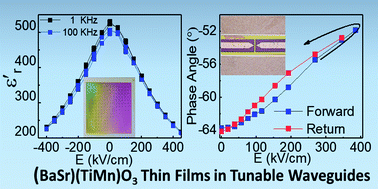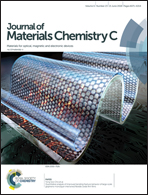Combinatorial synthesis and screening of (Ba,Sr)(Ti,Mn)O3 thin films for optimization of tunable co-planar waveguides
Abstract
The identification and optimization of tunable dielectric materials exhibiting low loss characteristics in the GHz frequencies are essential in the development of low power devices for microwave applications. We have applied a combinatorial synthetic methodology employing multiple atomic evaporative sources to produce compositional gradient thin film (Ba,Sr)(Ti,Mn)O3 perovskites. High throughput screening chips of both capacitive and waveguide structures are used to measure the compositional dependence of the dielectric properties of the fully characterised thin film materials. The co-planar waveguides are shown to allow measurements at frequencies exceeding 10 GHz. Using this methodology, we have identified (Ba,Sr)(Ti,Mn)O3 compositions which exhibit good tunability with low losses at microwave frequencies: for a single device with a 10 V DC bias one can achieve a 12° phase shift with excellent transmission characteristics, and an insertion loss of ∼3.2 dB. We show that small changes in composition can result in a significant change in dielectric characteristics and device performance, and that the experimental protocol developed provides a powerful methodology for the development of materials and microwave devices.



 Please wait while we load your content...
Please wait while we load your content...